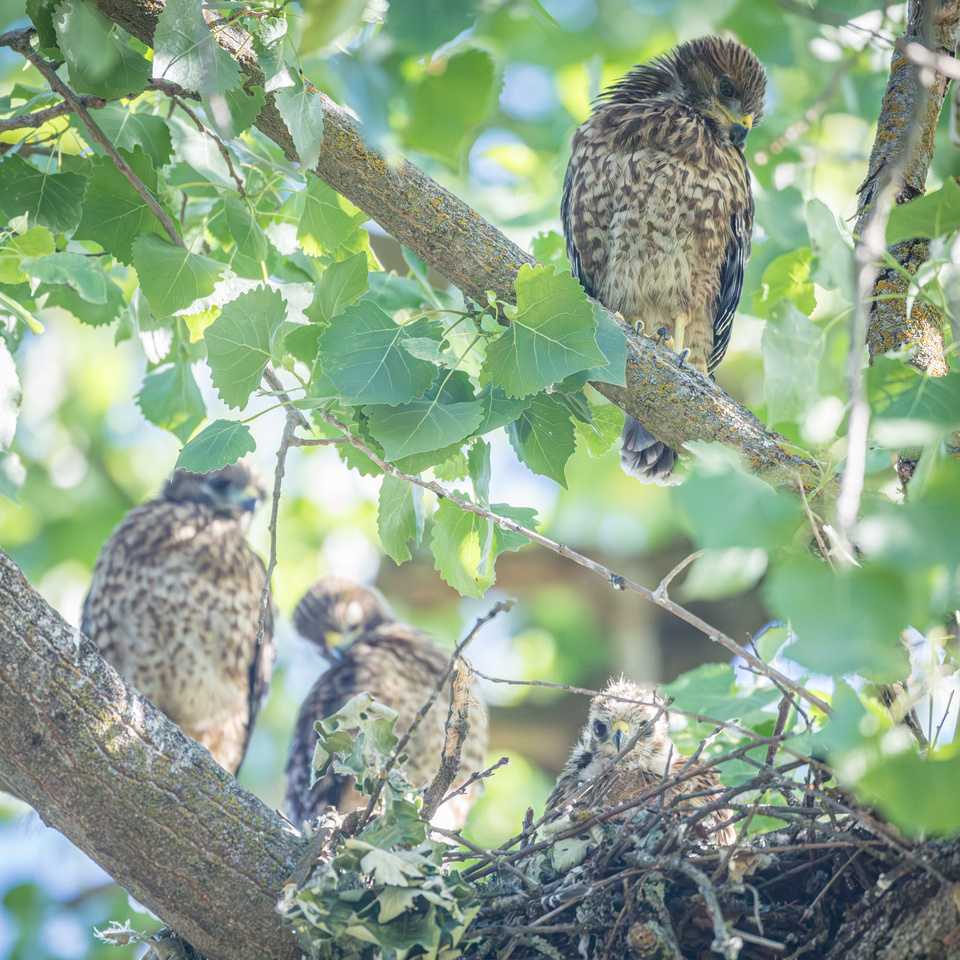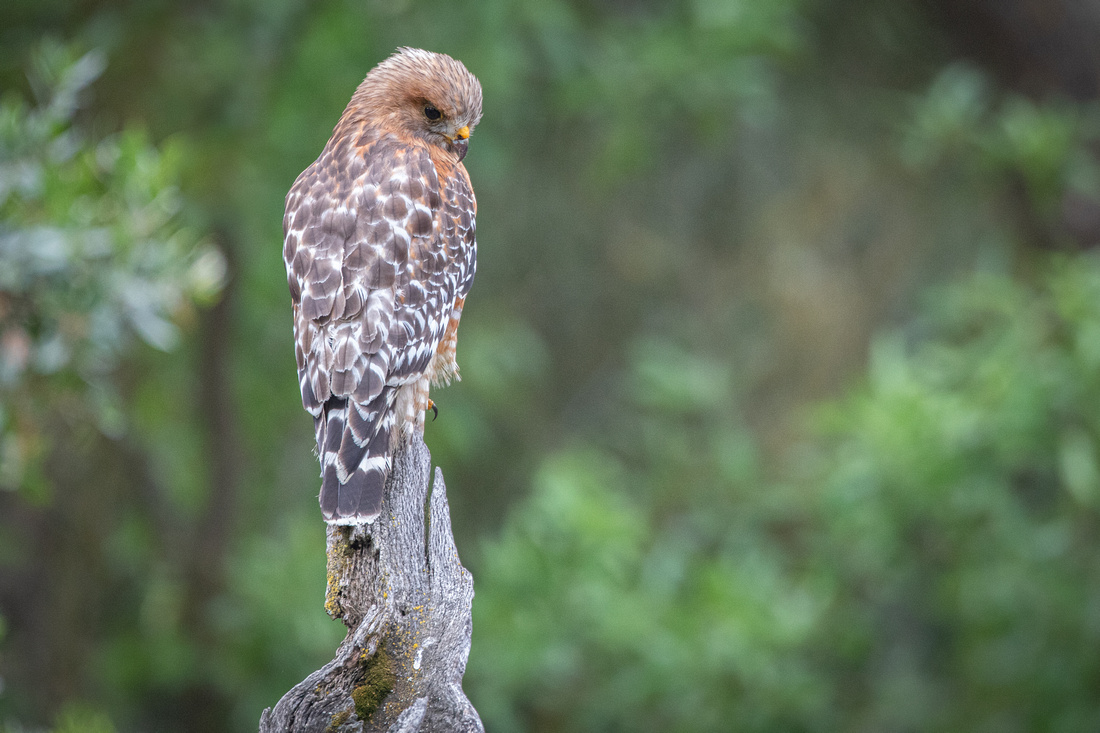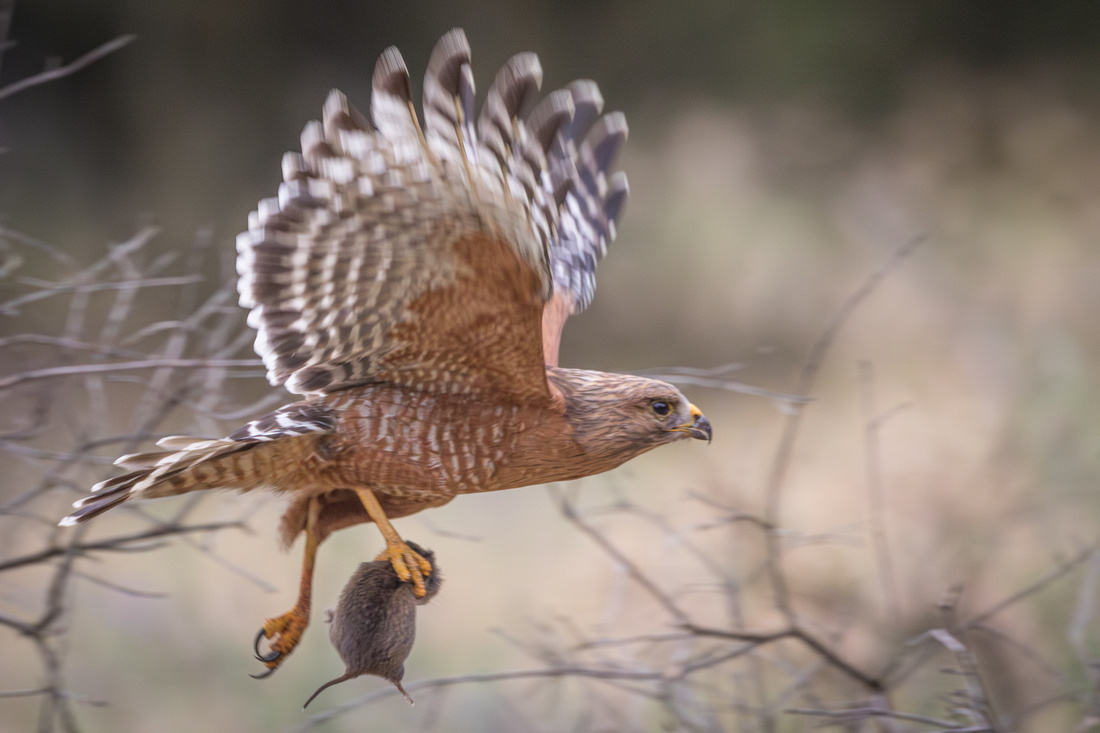Red-shouldered Hawk pairs chapter 4
Two mating pairs of Red-shouldered hawks
Text and photos by Heather Cline
Chapter 1 | Chapter 2 | Chapter 3 | Chapter 4 | Chapter 5
If you are reading this post but haven't seen the previous chapters, you can check them out using the links above.
This post is intended to provide some updates on what I have seen since Chapter 3 was published.
Chicks (or Eya's as hawk babies are called) have arrived!!! I estimate they started to hatch on April 25th. Through my continued research, I found that the eggs are laid every other day and hatch in the same order. The estimated date for eggs to hatch is April 24th, so both pairs were right on schedule. As a professional in the project management field, I have high respect for their ability to hit a deadline. Because of the asynchronous hatching, older nestlings may be as much as 6-8 days more mature than the younger ones and that is apparent when I have seen them next to each other. Although, with each day, they are starting to look more and more alike.
 Chapter 4, Ana & Astons eya Chapter 4, Ana & Astons eya
One of Ana and Aston's nestlings - look at that face! |
In the week's following the egg laying, I checked in on both pairs nearly every day. One day, I saw a broken shell on the trail. Based on the size and color, it was likely a red-shoulder hawk's egg. It was a bit far from either nest, but it reminded me how tough it is for these raptors to protect their young from predators.
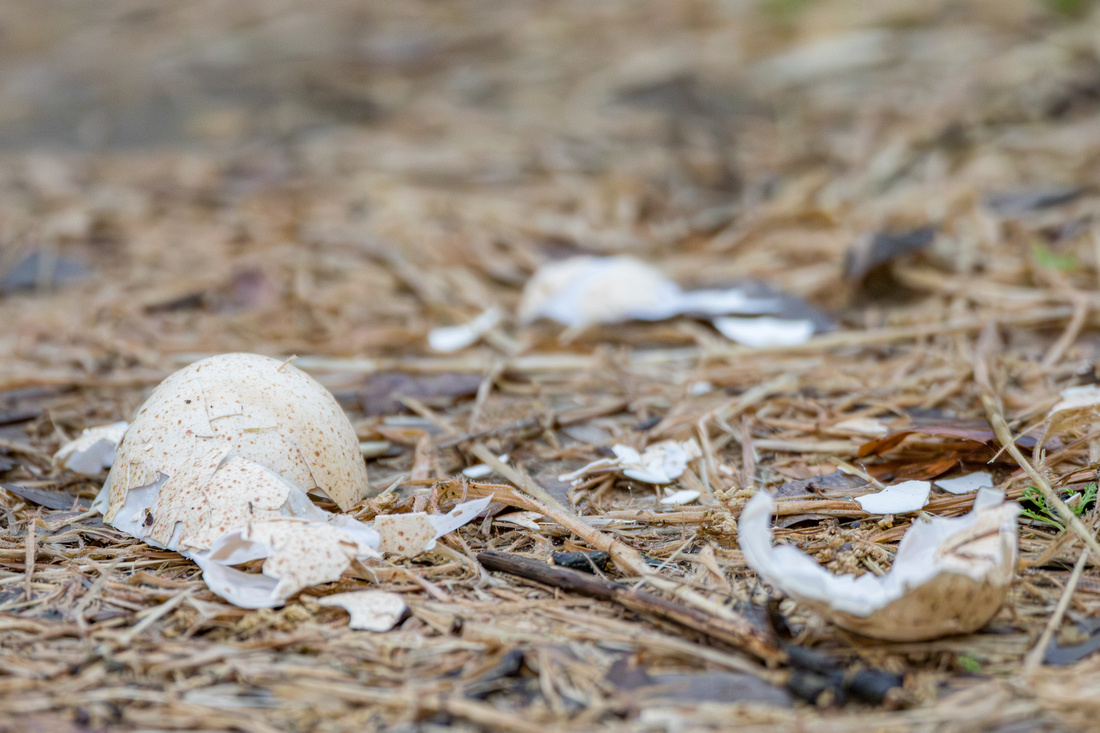 Egg that has been predated on from nest (not Bea, Bert, Ana, or Aston's) Egg that has been predated on from nest (not Bea, Bert, Ana, or Aston's)
|
Both pairs have 4 eyas. Since Red-shouldered hawks typically lay 2-4 eggs, I would say both pairs were quite successful. The nestlings will likely remain in the nest for about 6 weeks, so until roughly June 6th. During the first two weeks, the eyas were very dependent on the parents for warmth and feeding. As they have grown, the length of time the parents spend at the nest has decreased. Sometimes, they swing by so quickly, I almost miss it.
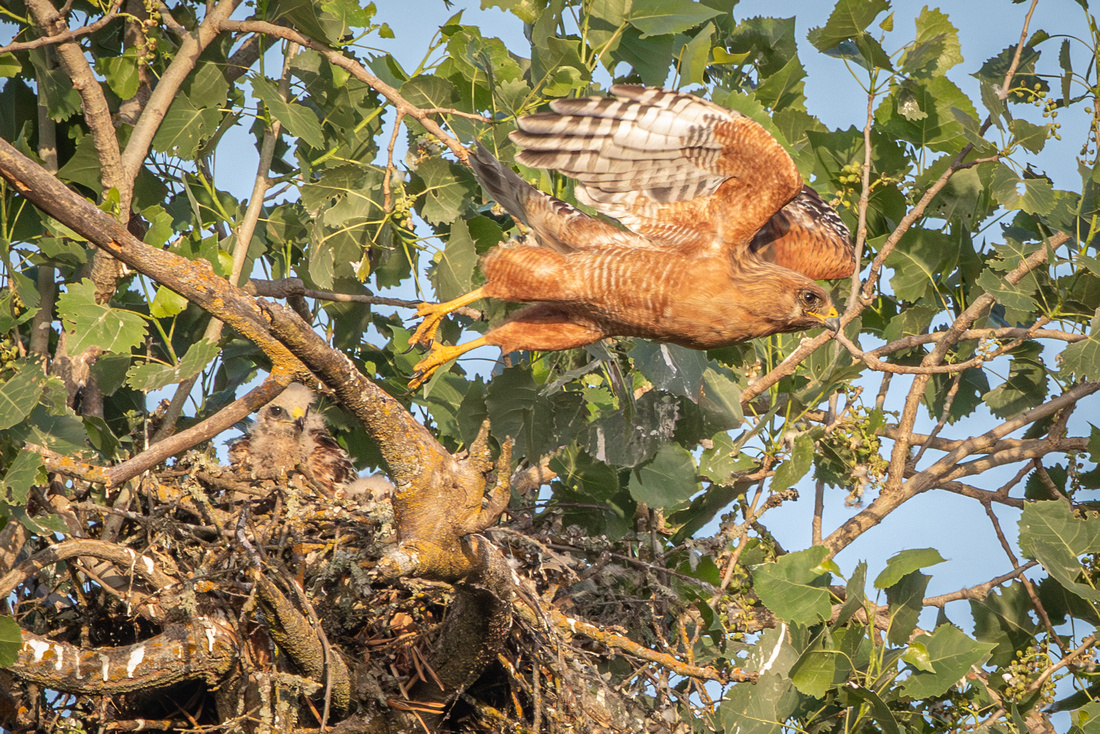 Chapter 4, Bea leaving nest Chapter 4, Bea leaving nest
Bea taking off after a quick stop at the nest |
The survival rate for Red-shouldered hawks is roughly 50%, which means, statistically only half of the eight nestlings will make it through this first year. Collisions, electrocution, and poisoning are among the leading causes of mortality for these hawks.
I've mentioned previously that I have had better luck consistently seeing Bea and Bert than Ana and Aston and that trend has continued, but in terms of their young, Ana and Aston's nestlings are easier to view than Bea and Bert's. As Spring has progressed, the foliage has filled out, camoflauging Bea and Bert's nest. In addition, it is farther away and has some inconveniently located branches that partially block the view of the nestlings.
 
A terrible photo of Bea and Bert's nestlings - the only one so far that I've caught to shows all 4 at once. |
|
Ana and Aston's 4 nestlings. The one in the nest is definitely the youngest. |
Bea and Bert themselves continue to be easier to spot each day, hunting near the nest. I sometimes wonder if they have gotten used to my presence.
|
Bert, highly focused hunting behavior |
|
Bert, with his morning catch |
Even though the nest is built and the eggs have hatched, the hawks will continue to bring sticks and leaves to the nest. There are two theories around why they do this: to signify it as an active hawk territory or to act as a natural insect repellent.
|
Bea, bringing oak leaves to the nest |
After fledging, the young remain in the area, depending on their parents for food for at least one month. The area where their nests are located is quite abundant with mice, voles, squirrels, lizards, and snakes, so there is ample food to support the families.
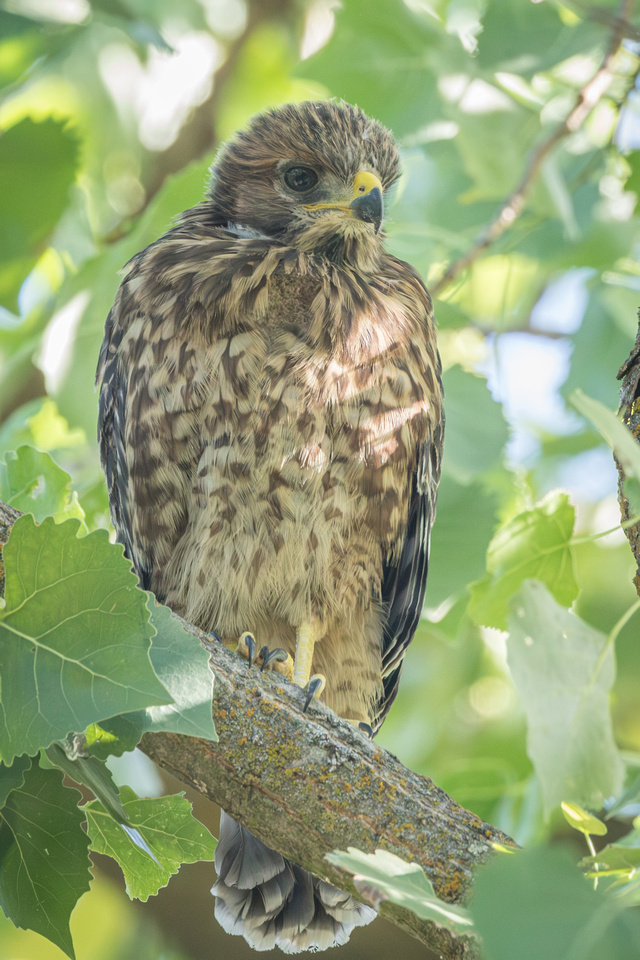 Chapter 4, Ana and Aston's Eya Chapter 4, Ana and Aston's Eya
|
The fledglings are now starting to gain confidence and are perching on branches outside the nests. I'm looking forward to seeing them start to fly in the coming weeks and I hope to get some photos to share in Chapter 5. To see the full gallery of images, click here. Like the nestlings, the gallery is getting big!
